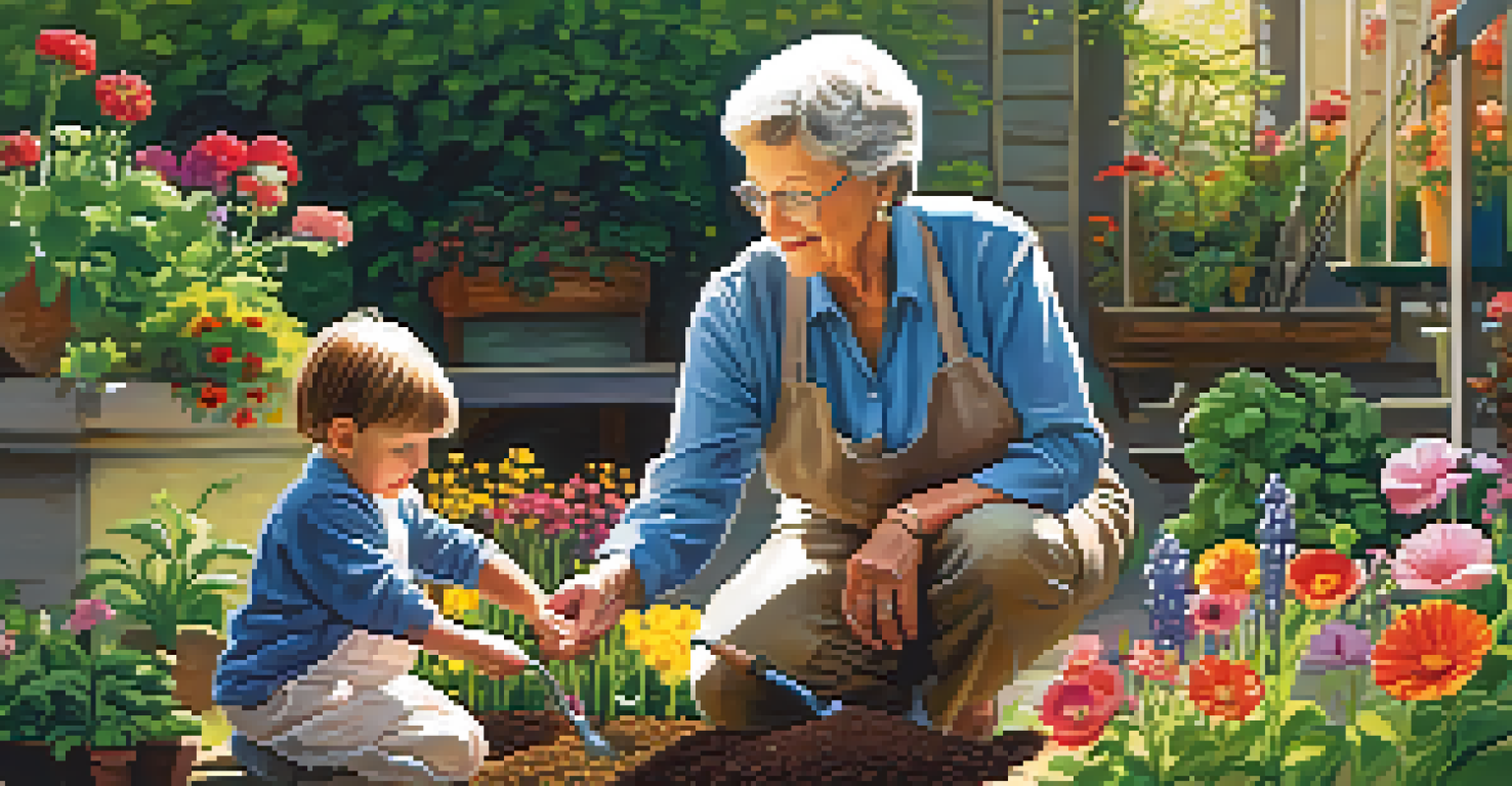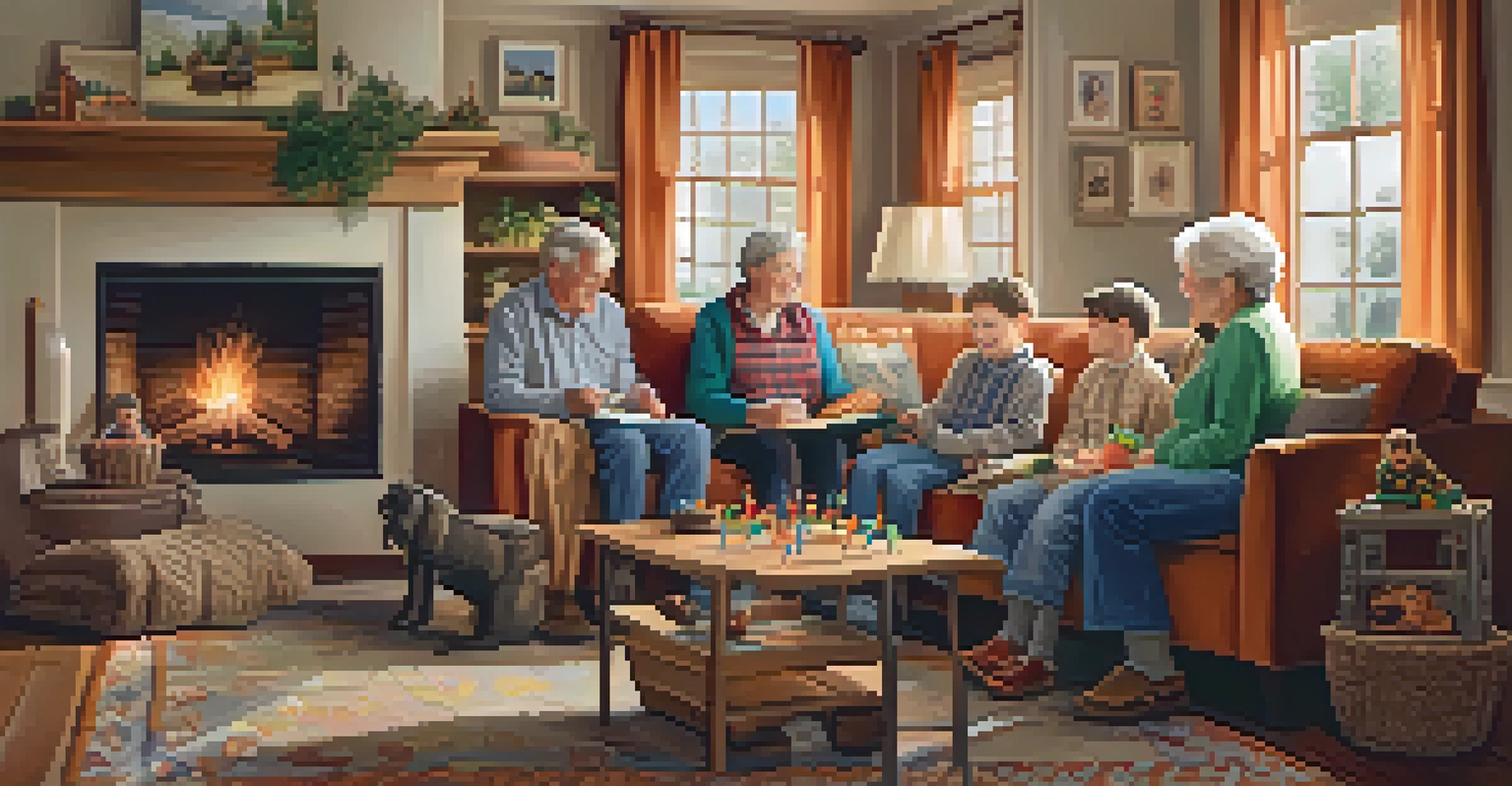Cultural Benefits of Living in a Multi-Generational Home

Enhanced Family Bonds Through Daily Interactions
Living in a multi-generational home can significantly strengthen family ties. With grandparents, parents, and children under one roof, daily interactions become the norm, fostering deeper relationships. These close-knit connections create a sense of belonging and emotional support that can be invaluable.
The family is one of nature's masterpieces.
For instance, shared meals become more than just a routine; they transform into cherished moments filled with laughter and storytelling. These gatherings allow family members to share experiences and wisdom, enriching the family narrative. Over time, these bonds can lead to a stronger family unit that supports each other through life's challenges.
Moreover, children benefit immensely from the presence of their grandparents, who often serve as mentors and role models. This dynamic creates a nurturing environment where children learn respect, empathy, and traditions, helping to instill values that can last a lifetime.
Cultural Traditions Passed Down Generationally
Living in a multi-generational home provides a unique opportunity to pass down cultural traditions. Elders often have the wisdom and stories of their heritage, which can be shared with younger generations. This transmission of culture helps to keep family histories alive and thriving.

For example, celebrations such as holidays or family gatherings become vibrant occasions where traditions are honored and practiced. Whether it’s cooking a family recipe or celebrating a cultural festival, these shared experiences deepen cultural identity. They also help children understand their roots and the significance of their family's history.
Strengthening Family Bonds
Daily interactions in a multi-generational home foster deeper relationships and a strong sense of belonging.
Additionally, this environment encourages learning through storytelling, music, and art, allowing children to engage with their cultural heritage creatively. Maintaining these traditions within a multi-generational household ensures that they do not fade away, promoting a rich cultural tapestry that spans generations.
Diversity in Perspectives and Life Experiences
A multi-generational home is a melting pot of perspectives, offering diverse life experiences that can enrich family discussions. With different age groups living together, individuals can share their unique viewpoints, leading to meaningful conversations. This diversity fosters respect for differing opinions and encourages open-mindedness.
In family life, love is the oil that eases friction, the cement that binds closer together, and the music that brings harmony.
For instance, grandparents may offer insights into historical events, while younger generations can introduce modern ideas and technology. This exchange not only broadens understanding but also nurtures critical thinking skills among family members. When children see their family members openly discussing various topics, they learn the importance of dialogue and empathy.
Furthermore, embracing different perspectives can lead to creative problem-solving within the household. When faced with challenges, families can draw from a wealth of experiences, leading to more innovative solutions. This collaborative environment ultimately prepares children to navigate the complexities of the world.
Support Systems That Foster Resilience
Living with multiple generations creates a robust support system that can help families build resilience. In times of stress, having various family members available can provide emotional and practical support. This interconnectedness helps create a safety net that individuals can rely on during tough times.
For example, when a parent is overwhelmed with work or personal issues, a grandparent can step in to assist with childcare or provide guidance. This shared responsibility alleviates stress and allows families to adapt more easily to changing circumstances. Additionally, knowing that support is just a room away can boost mental health and overall well-being.
Cultural Traditions Thrive
Living together allows families to pass down cultural traditions, enriching the family's identity and history.
Moreover, this support system extends beyond emotional assistance. Family members can pool resources, whether it’s financial help or sharing household chores. This collaboration not only strengthens family ties but also fosters a sense of community and unity.
Learning Patience and Conflict Resolution Skills
Living in a multi-generational setting naturally teaches patience and conflict resolution. With various personalities and age groups coexisting, disagreements are bound to arise. However, navigating these conflicts as a family can foster essential life skills that benefit everyone involved.
For instance, when siblings or cousins bicker, they learn to communicate their feelings and find common ground. These experiences teach them the importance of compromise and negotiation, which are vital skills in all relationships. As they observe older family members resolving conflicts, they gain valuable insights into effective communication and empathy.
Additionally, the patience required to live harmoniously with others can translate into other areas of life. Children who learn to respect and understand different viewpoints are often better equipped to handle challenges outside the home. This development ultimately leads to more harmonious relationships in school, work, and beyond.
Shared Responsibilities and Teamwork
In a multi-generational home, shared responsibilities foster a sense of teamwork among family members. When everyone pitches in to manage household chores, it cultivates a spirit of cooperation. This collaboration not only lightens the load but also builds essential life skills.
For example, younger family members can learn valuable skills from their elders, such as cooking or gardening. These shared tasks create opportunities for bonding and teach children the importance of contributing to the family unit. Over time, this sense of teamwork can lead to stronger relationships and a more cohesive family environment.
Support Systems Boost Resilience
A multi-generational household creates a robust support network that enhances emotional and practical assistance during tough times.
Moreover, sharing responsibilities helps instill a strong work ethic in children. They learn that every contribution, no matter how small, is valuable and necessary for the household's success. This understanding of teamwork can prepare them for future collaboration in school and the workplace.
Creating a Rich Environment for Learning and Growth
A multi-generational home creates a dynamic environment for learning and growth. With diverse knowledge and experiences at hand, family members can engage in continuous learning. This atmosphere encourages curiosity and exploration, enriching the lives of everyone involved.
For instance, children can learn about history and life lessons from their grandparents, while also being introduced to new technologies and ideas by younger relatives. This blend of traditional and modern knowledge fosters a well-rounded education that goes beyond formal schooling. It creates a space where learning is valued and encouraged.

Additionally, this environment allows family members to pursue personal growth together. Whether it's picking up a new hobby or learning a language, having a support system enhances motivation and accountability. The collaborative spirit within a multi-generational household not only strengthens bonds but also enriches individual lives.